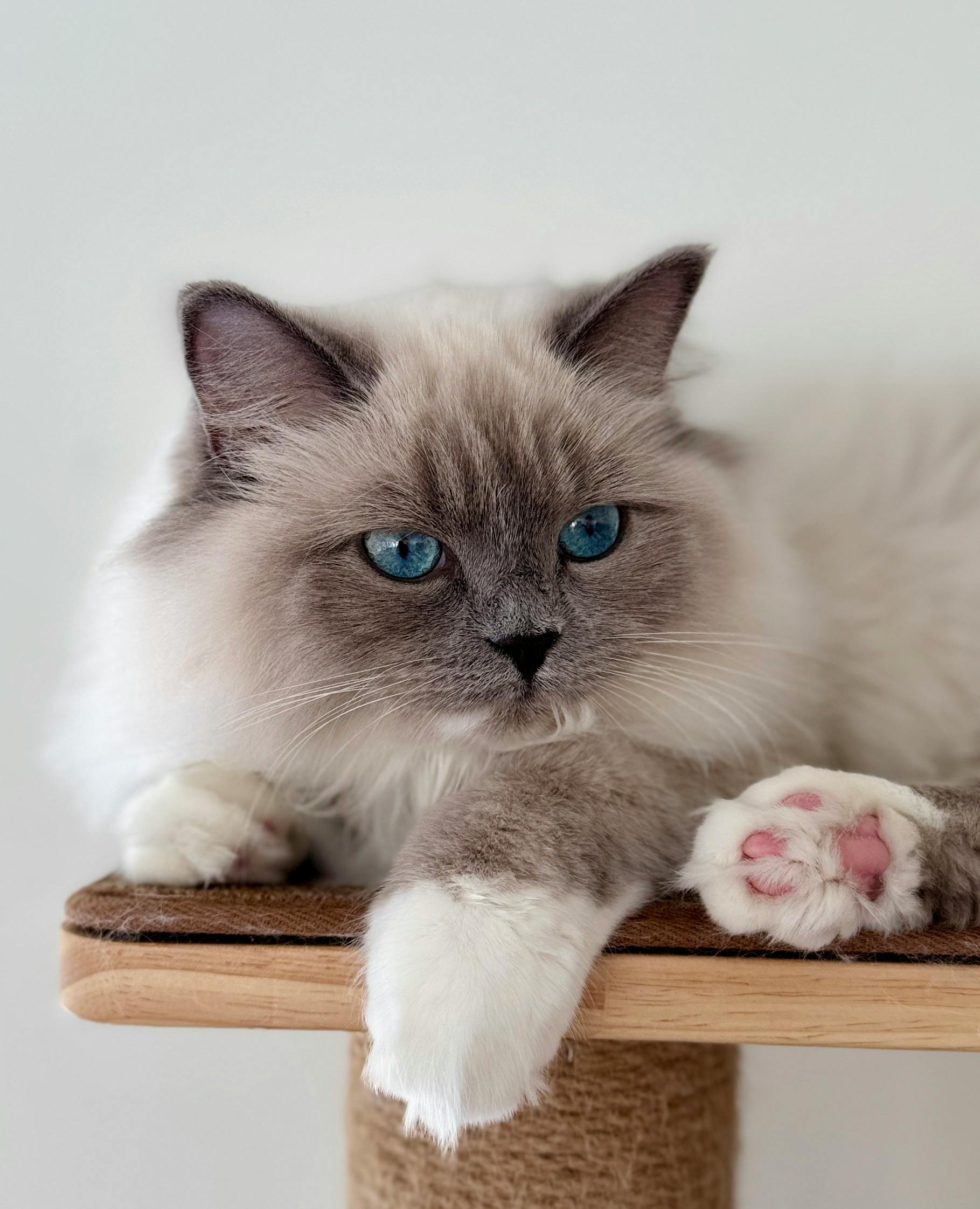
Blue Mitted Ragdoll Cats
The Blue Mitted Ragdoll cat is one of the most recognizable and beloved color patterns in the entire breed. With its frosty blue-gray points, soft white mittens, and angelic blue eyes, this variation has the timeless look that defines the Ragdoll’s gentle personality.
For new cat owners searching for a calm, affectionate companion, the Blue Mitted pattern captures the essence of what makes the Ragdoll so famous — elegance, serenity, and trust.
But when you first start comparing color patterns online, it can get confusing fast. Blue Mitted, Blue Lynx, Blue Bicolor — they all sound similar, and many kittens look identical when young. So what actually makes the Blue Mitted unique?
This post breaks down everything you need to know — straight from breeders, owners, and community discussions — about what defines Blue Mitted Ragdoll cats, how they compare to other Ragdoll colors, and what to expect as your kitten grows up.
What Does “Blue Mitted” Mean?
In Ragdolls, every pattern name describes two things — color and marking style.
- “Blue” means the cat carries the dilute gene, which turns black pigment into a soft, silvery-gray shade.
- “Mitted” refers to the white “gloves” on the front paws and the white “boots” on the hind legs. Mitted Ragdolls also have a white chin and often a narrow white blaze or stripe running up the nose.
Together, these traits create the Blue Mitted — a striking balance between the bold contrast of a pointed cat and the clean brightness of a bicolor.
Most Blue Mitted Ragdoll cats have:
- Pale gray points (face, ears, tail, legs)
- A frosty bluish-white body
- Pure white mittens, boots, and chin
- Bright blue eyes
- A symmetrical face with or without a thin blaze
When fully grown, their coats have a powdery look, like brushed steel touched by light.
How Blue Mitted Ragdoll Cats Develop Their Color
Like all colorpoint Ragdolls, Blue Mitted Ragdoll kittens are born completely white. It’s only after a few weeks that pigment starts to appear on the cooler parts of their bodies — the ears, tail, nose, and paws.
Around 3–4 weeks, faint shadows begin to show. By 8–12 weeks, you’ll start seeing the white mittens, chin, and possible nose blaze more clearly. Their coat continues developing for up to three years.
As adults, Blue Mitted cats have a distinct contrast between their frosty body and darker gray points, giving them a soft, balanced appearance that’s neither too stark nor too busy.
Because the colorpoint gene is temperature sensitive, cats raised in cooler climates tend to show deeper gray-blue points, while those in warmer homes stay lighter.
Read more about this in our Ragdoll Cat Colors and Coat Colors Genetics Explained
Reader Question: Blue Mitted vs. Blue Lynx
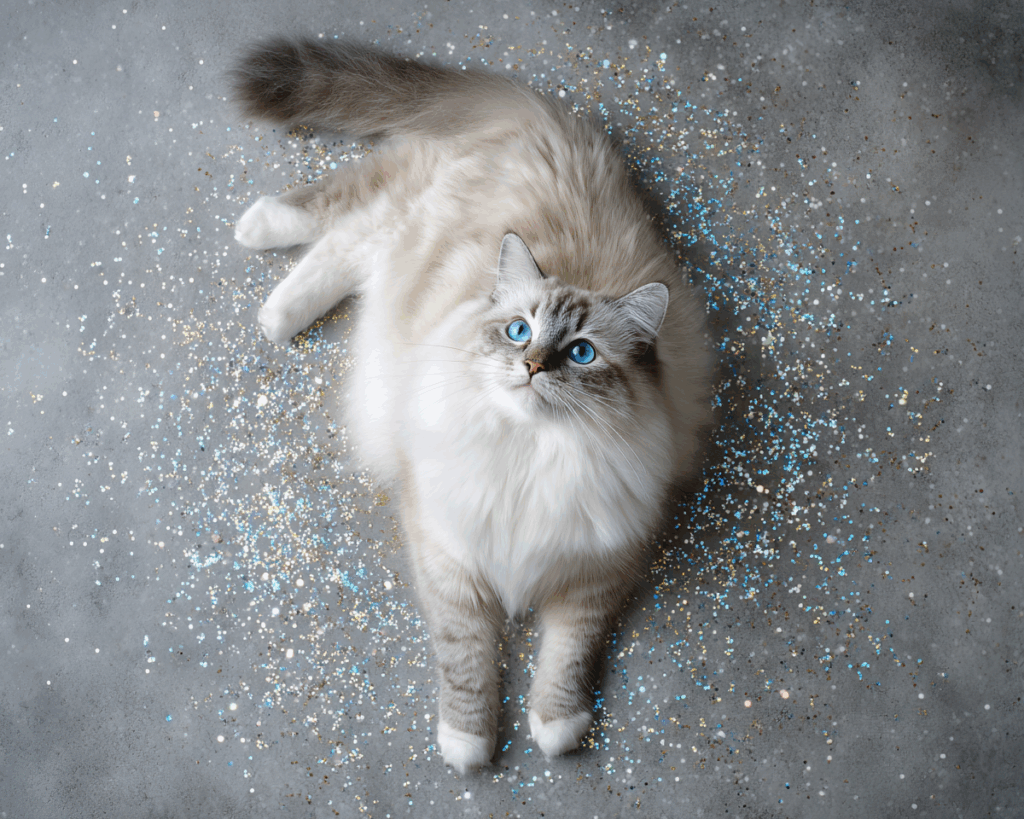
“Can anyone tell me the difference between a Blue Mitted and a Blue Lynx Ragdoll? They look almost identical in pictures. I can’t tell if I like the Lynx stripes or not — and I’ve got to decide soon!”
This is one of the most common questions among new Ragdoll buyers, and it makes perfect sense. When kittens are still white, patterns can be almost impossible to distinguish.
Here’s how experienced owners and breeders explained it:
Comment 1:
“Blue Lynx cats have faint tabby striping — little rings on the tail and soft lines around the eyes and nose. Blue Mitted cats have solid color points with no striping, just the classic clean look. The white paws and chin make them look neater and softer overall.”
Comment 2:
“If you want something very uniform and classic, go for the Mitted. Lynx cats are beautiful too, but their tabby pattern makes them look a little more textured or shaded.”
Comment 3:
“I have both, a Blue Mitted and a Blue Lynx Mitted. They’re both stunning, but the Blue Mitted has a smoother look while the Lynx has more contrast. You can’t really go wrong, but the Mitted looks like the Ragdoll everyone pictures in their head.”
To summarize:
- Blue Mitted: Solid gray points, white mittens and chin, clean pattern
- Blue Lynx: Gray stripes, tabby face, same base color but more texture
You can see visual comparisons in our Ragdoll Lynx Pattern Guide.
Blue Mitted vs. Blue Mink Mitted Ragdolls
Some breeders offer both Blue Mitted and Blue Mink Mitted kittens, and it’s common for new Ragdoll owners to wonder what the “mink” part actually means. Although the two look similar, the difference comes down to genetics, color depth, and eye color.
What “Mink” Means
The term mink refers to a variation in the Ragdoll’s color gene. Traditional Ragdolls carry two copies of the colorpoint allele (cs/cs), which causes kittens to be born white and gradually develop color on the cooler parts of their bodies — the ears, face, tail, and legs.
A mink Ragdoll, however, carries one colorpoint allele and one Burmese allele (cb/cs). This changes how pigment is expressed in the coat and eyes. Mink Ragdolls are born with visible color, not white, and their coats become deeper, richer, and silkier as they mature.
Key Genetic Differences
| Trait | Traditional Blue Mitted | Blue Mink Mitted |
|---|---|---|
| Genotype | cs/cs (Siamese colorpoint) | cb/cs (Mink variant) |
| Born Color | White | Already colored at birth |
| Coat Texture | Silky and soft | Denser, velvet-like texture |
| Coat Shade | Pale silvery blue | Deeper, more saturated blue |
| Eye Color | Bright sapphire blue | Aqua to teal blue-green |
| Eligibility for Shows | Accepted under Ragdoll standard | Not eligible under traditional Ragdoll standard; may be classified under Cherubim groups |
| Maturity Color | Lighter, frosted appearance | Darker, richer contrast |
Appearance and Coat Feel
Blue Mink Mitted Ragdolls have a richer blue-gray tone across the body with points that blend smoothly rather than standing out sharply. Their fur often feels finer and more velvety than a traditional Ragdoll’s. While a Blue Mitted’s contrast is clear — white chin, white mittens, and defined gray points — the Blue Mink Mitted’s color flows more evenly, giving a plush, luxurious appearance.
Their eyes are the main giveaway: minks rarely have the deep sapphire blue of traditional Ragdolls. Instead, they display an aqua or sea-glass hue that ranges from turquoise to teal, depending on lighting.
Show Eligibility and Breed Classification
In major cat registries such as TICA and CFA, traditional Ragdolls — those with the cs/cs genotype and blue eyes — are the only ones accepted for the Ragdoll show standard. Mink, sepia, and solid variants fall under the broader Cherubim classification.
This does not mean minks are mixed-breed or “less pure.” They share the same lineage and temperament, but their genetic combination simply produces a different coat expression. Breeders often keep separate lines to maintain clarity for show versus companion homes.
Which One to Choose
If you love the classic Ragdoll look — bright blue eyes, icy points, and lighter body — the traditional Blue Mitted is ideal.
If you prefer a richer, velvety coat with aqua eyes and don’t plan to show, the Blue Mink Mitted offers a deeper, more dramatic appearance.
Both carry the same Ragdoll temperament: calm, affectionate, and loyal. The choice comes down to aesthetic preference and whether show eligibility matters to you.
Blue Mitted vs. Blue Bicolor
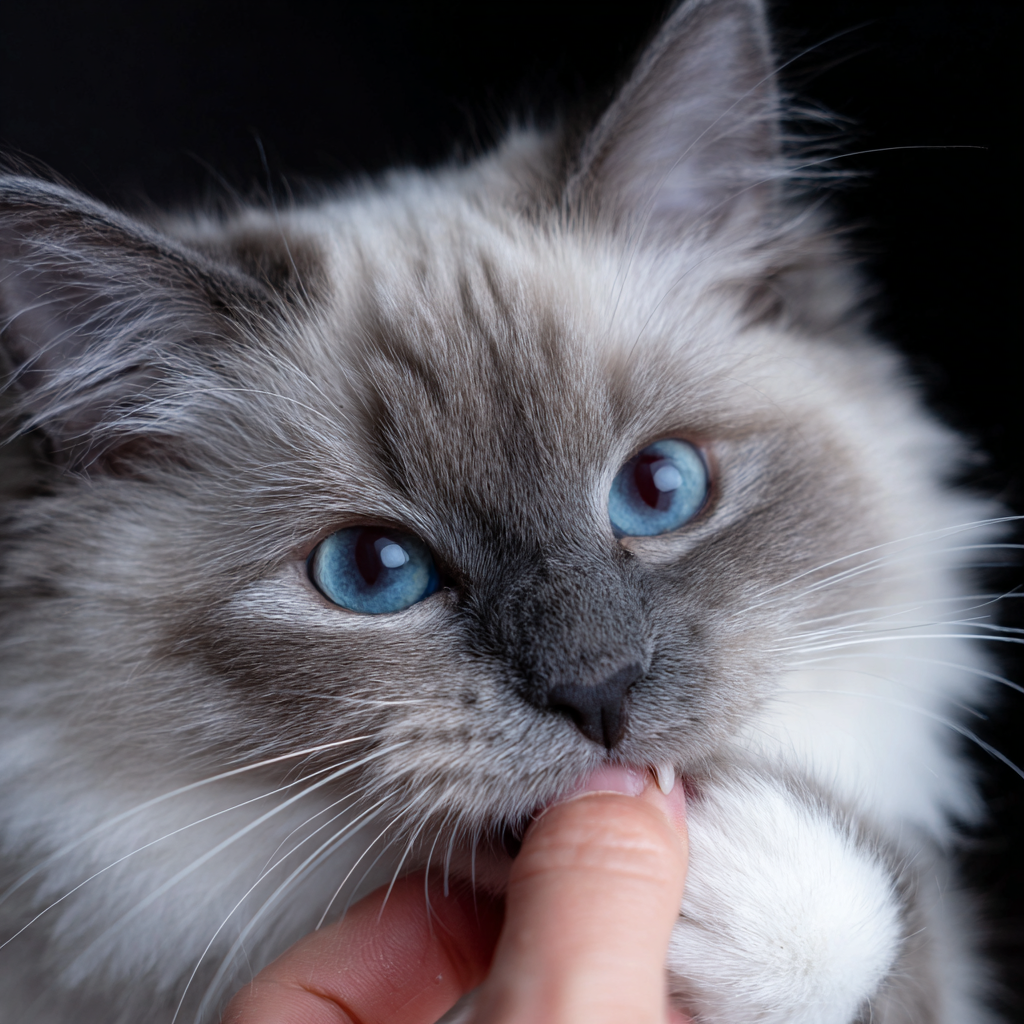
“How can you tell a Blue Mitted apart from a Blue Bicolor? They look similar in pictures!”
Blue Mitted vs Blue Bicolor Answer:
“A Blue Bicolor has a big white inverted ‘V’ on the face, white legs, and a colored saddle on the back. A Blue Mitted just has white paws, a white chin, and sometimes a thin blaze. The Mitted’s face stays mostly colored while the Bicolor’s face has that wide white ‘V’.”
Summary Table
| Feature | Blue Mitted Ragdoll | Blue Bicolor Ragdoll |
|---|---|---|
| Face | Fully colored with optional thin blaze | White inverted “V” mask |
| Paws | White mittens and boots | All white legs |
| Chin | White | White |
| Chest | White | White |
| Back | Fully colored | White saddle |
| Overall Look | Balanced and classic | Bold and high-contrast |
The Blue Mitted is often considered the “middle ground” between the fully pointed and fully bicolor patterns — subtle yet refined.
Does the Blue Mitted Ragdoll Stay Light or Darken With Age?
“I’ve seen pictures where Blue Mitted cats look almost white, and others where they’re dark gray. What should I expect?”
Top reply:
“They darken gradually until they’re around three years old. Mine started as almost white with light gray ears, and now she’s a soft silvery blue with deeper gray points. It depends on temperature and genetics. Cooler homes make darker cats.”
Another owner added:
“My Blue Mitted boy darkened so much that his body is now a smoky cream-blue, but his chin and mittens stayed bright white. The contrast is beautiful — they look even better with age.”
If you’re in a colder climate, expect deeper points. Warmer homes usually keep the Blue Mitted pale and powdery.
Genetics of the Blue Mitted Ragdoll Pattern
The Blue Mitted look results from three primary genes:
- Dilution (d/d) – Converts black pigment to soft gray-blue.
- Colorpoint (cs/cs) – Restricts pigment to cooler body areas.
- White Spotting (S gene) – Adds the mittens, boots, and white chin.
When these combine, you get a soft gray-pointed cat with symmetrical white paws — a perfect genetic balance between dark and light.
Breeders often note that Blue Mitted kittens can carry or mask other traits, like faint striping or nose blazes, so it’s important to wait until 10–12 weeks before making final selections for show quality.
To confirm your kitten’s genetics, consider a DNA test through UC Davis or Optimal Selection.
Temperament and Personality
Every Ragdoll is known for being calm, loyal, and affectionate — but Blue Mitteds often stand out for their balance.
Owners describe them as:
- Gentle but playful
- Intelligent and trainable (they often fetch!)
- Very social with guests
- Tolerant with children and dogs
- Relaxed in almost any household setting
“My Blue Mitted girl is the definition of a lap cat. She follows me around, greets everyone at the door, and melts in your arms when you pick her up. Total sweetheart.”
“I have a Blue Mitted and a Seal Bicolor — the Mitted is quieter, more observant, while the Bicolor is bold and attention-seeking. Perfect combo.”
Their even-tempered personalities make Blue Mitteds especially popular for families or anyone wanting a predictable, low-stress companion.
Grooming and Care
Despite their luxurious appearance, Blue Mitted Ragdolls have coats that are surprisingly easy to maintain.
- Comb once or twice per week to remove loose hair.
- Wipe with a damp cloth to keep the pale areas bright.
- Trim nails every few weeks.
- Bathe occasionally if necessary, but avoid overbathing — their natural oils keep the coat silky.
Regular grooming also prevents matting and keeps shedding under control, especially in seasonal changes.
See our Complete Guide to Ragdoll Cats for tools and product suggestions.
Health and Lifespan
Blue Mitted Ragdolls live an average of 13–18 years. They are generally healthy, but as with all pedigreed cats, responsible breeders perform genetic health screening.
Common tests include:
- HCM (Hypertrophic Cardiomyopathy)
- PKD (Polycystic Kidney Disease)
- PRA (Progressive Retinal Atrophy)
Ask your breeder for proof of testing and clearances before placing a deposit. See more details in our Find Ragdoll Kittens For Sale Near Me .
Price and Availability
Because the Blue Mitted is one of the most requested patterns, kittens often sell quickly. Expect a price range of $4,000–$4,800, depending on breeder reputation, lineage, and markings.
They’re not as rare as the Lynx varieties but often in higher demand due to their symmetrical appearance and classic Ragdoll look.
Visit our Ragdoll Kittens for Sale page for current availability or to join the waitlist.
Learn More About Ragdoll Cat Colors
Final Thoughts
The Blue Mitted Ragdoll is the color most people picture when they imagine an exotic looking Ragdoll — soft, blue-gray points, pure white paws, and kind, glowing blue eyes. It’s the timeless combination of serenity and beauty.
Whether you’re choosing between a Blue Mitted and a Blue Lynx, or comparing to a Blue Bicolor, you can’t go wrong. Every pattern expresses the same gentle, affectionate nature that defines this breed.
If you’re drawn to the calm, balanced beauty of the Blue Mitted, explore available kittens on our Ragdoll Kittens for Sale page or Join Our Waitlist.
Related Reading (for Seal, Blue, Mitted or Lilac Lynx posts)
Want to learn more about how the Lynx pattern develops? Read our Ragdoll Lynx (Tabby) Pattern Guide for a complete breakdown of markings, genetics, and how the pattern appears across different colors.
If you’d like to understand the science behind these stripes, visit our Tabby Cat Genetics Guide, which explains how the agouti and pattern genes create every type of tabby coat — from classic to mackerel. For Tabby Ragdolls read this post.
You can also explore other Lynx color varieties such as:
- Blue Lynx Point Ragdoll
- Seal Lynx Mitted Ragdoll
- Seal Point Lynx Ragdoll
- Lilac Lynx Point Ragdoll
- Blue Mitted Ragdoll Cat
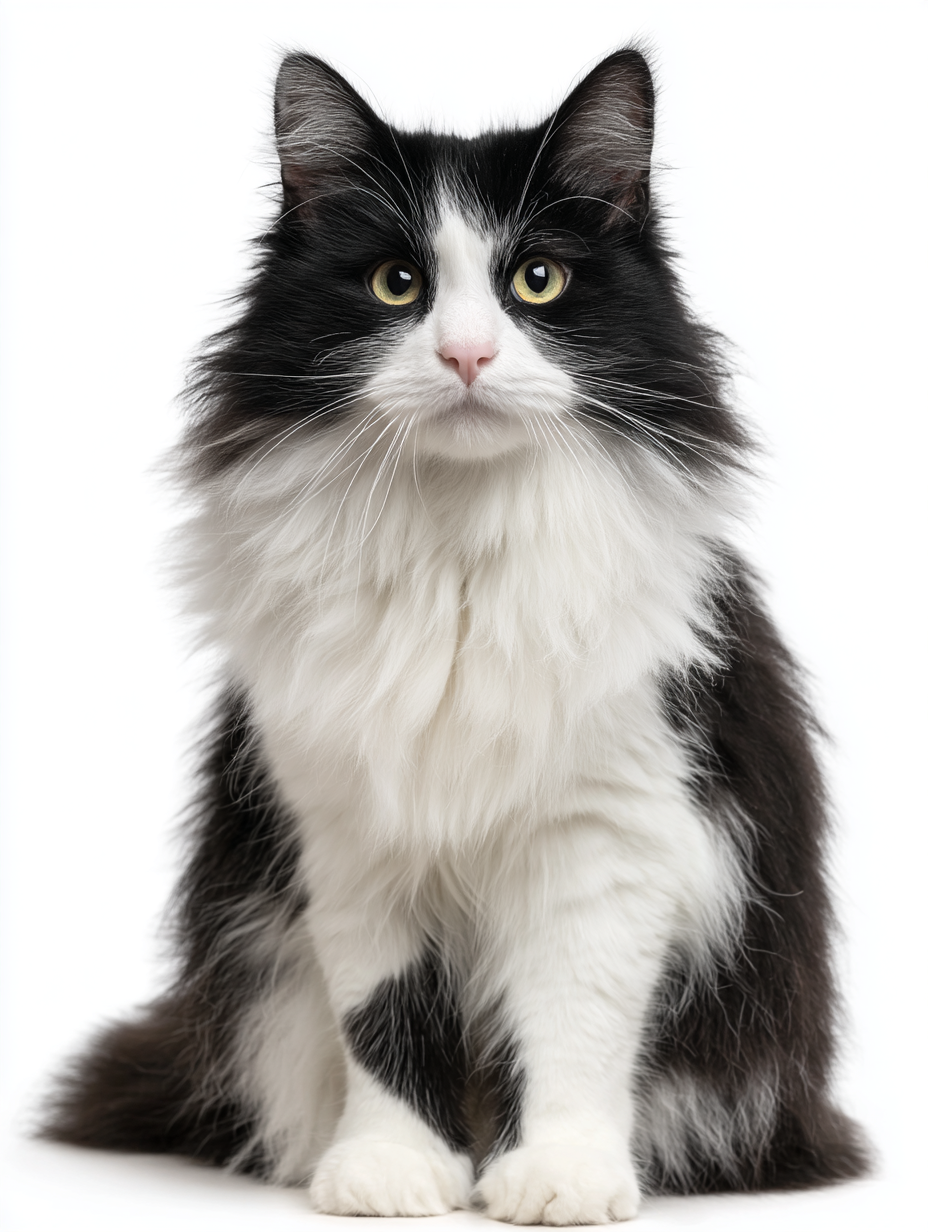
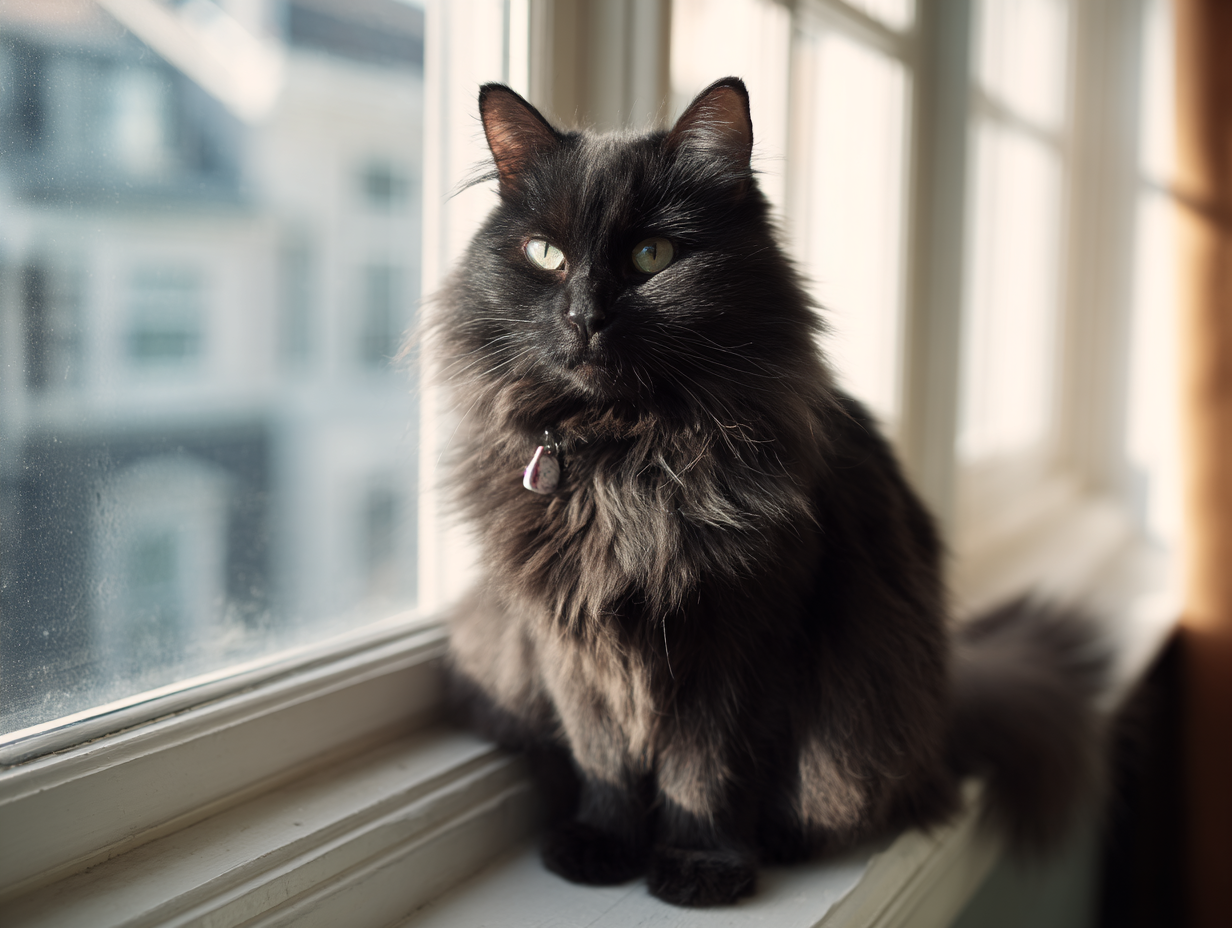
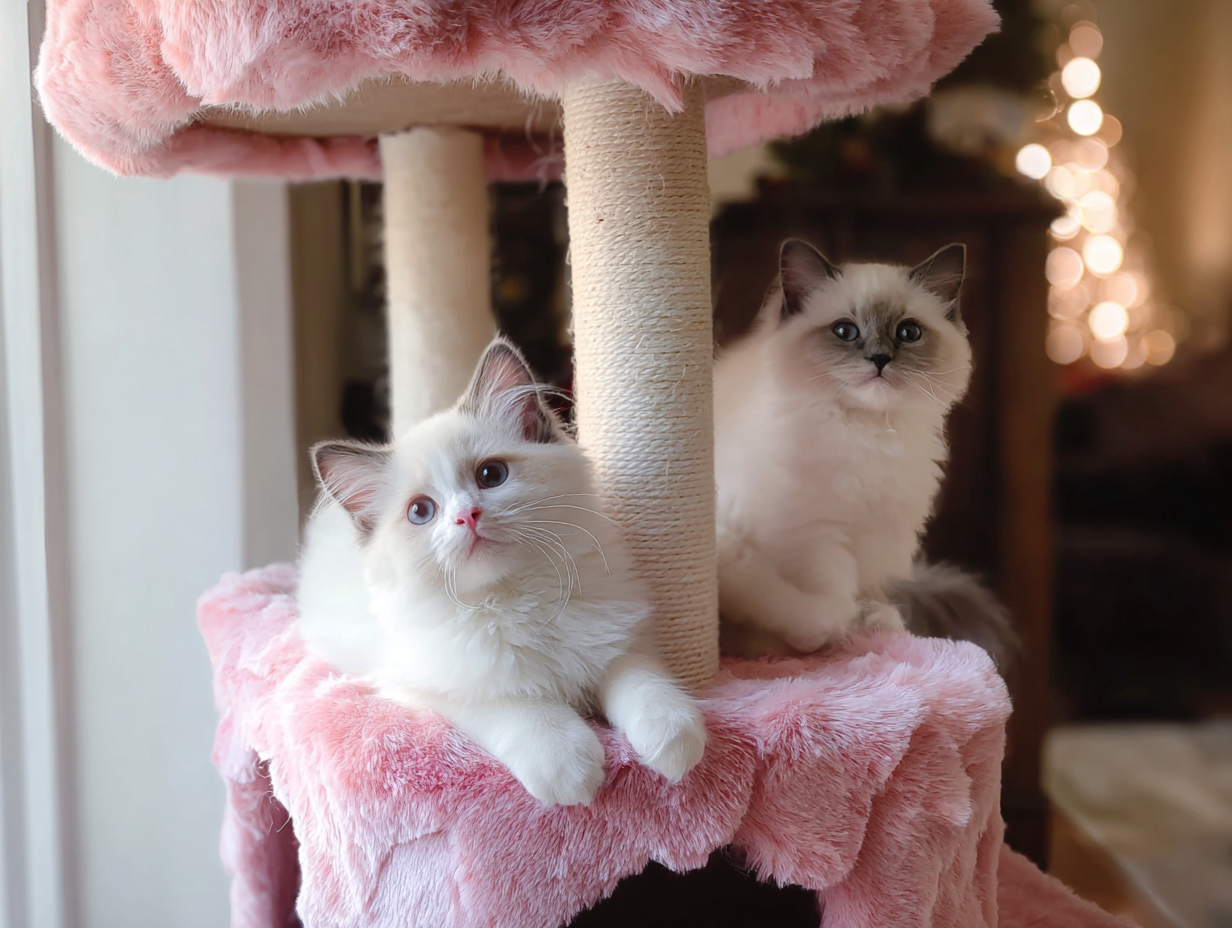
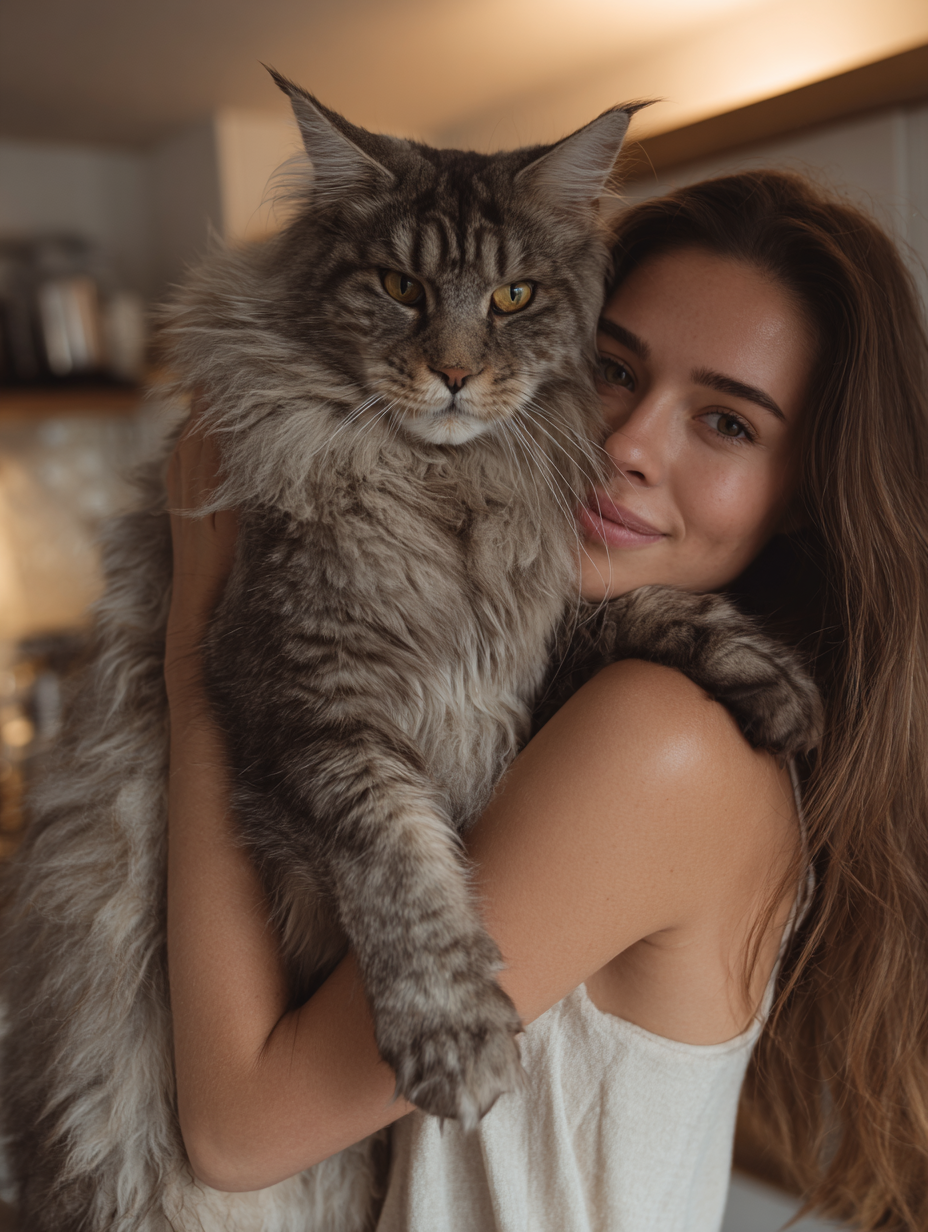

Read the Comments +